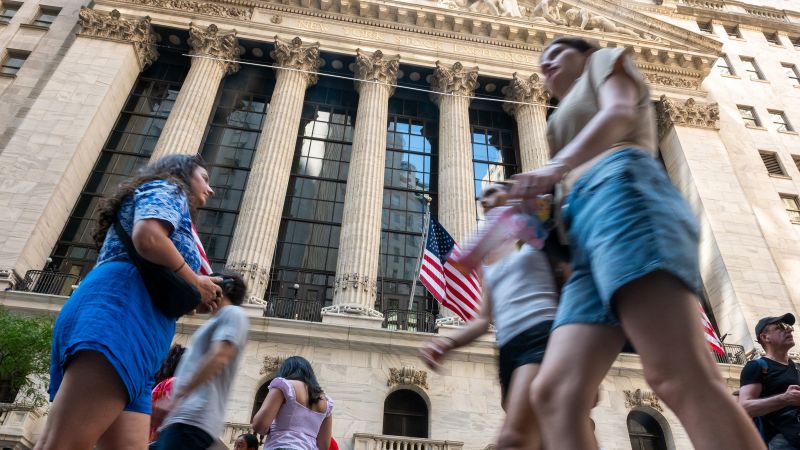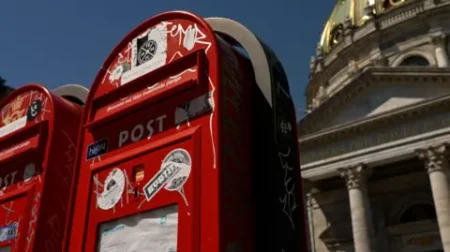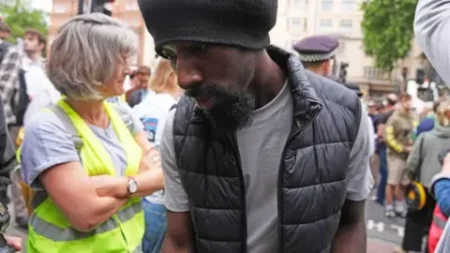The recent resurgence of “meme stocks,” especially highlighted by the phenomenon termed “Meme Stock Mania Part II,” fails to capture the unique fervor that characterized the original phenomenon back in early 2021. While the recent days showcased a glimmer of hope reminiscent of that tumultuous period, which saw everyday retail traders banding together to challenge seasoned Wall Street investors, the excitement seems tempered without the same depth of foundational drivers that once fueled it.
Within the stock market, a notable shift occurred this week that once again captivated amateur traders. Retail favorites like Kohl’s (KSS) experienced an explosive growth, with its shares more than doubling at one point on a Tuesday, ultimately concluding the day with a remarkable 27% increase, marking its best trading day ever. Similarly, the wearable camera company GoPro (GPRO) surged by 41%, its most significant performance in trading history, while Krispy Kreme (DNUT) and Rocket (RKT), a financial services firm, also witnessed remarkable surges. Nonetheless, this euphoria was short-lived as the following day saw a significant pullback, with Kohl’s shares declining by 14% by the close, GoPro dropping to a still-impressive 12% gain, and both Krispy Kreme and Rocket experiencing minimal upticks.
Despite this temporary rebellion of enthusiasm, industry experts quickly noted that the excitement derived mainly from social media rather than concrete fundamentals. According to Steve Sosnick of Interactive Brokers, investors are beginning to recognize that this recent surge is not underpinned by any substantial business developments. “The crew is moving on very quickly,” he stated, highlighting the fleeting nature of the trading frenzy. The essence of meme stocks revolves around their rise being driven by social media buzz, where enthusiastic chatter amplifies through memes, often leading traders to elevate stock prices without any significant corporate announcements or financial reports to justify such movements.
Reflecting back on the memorable highs of the first meme stock craze in 2021, there was an unmistakable intensity fueled by various socio-economic factors. The scenario back then was overshadowed by a global pandemic, the introduction of Covid vaccines, and a political transition with Joe Biden entering office. Coupled with government stimulus checks and near-zero interest rates, it conjured a unique cocktail of circumstances that presented itself as an opportunity for a financial revolution among the masses.
Venturing onto platforms like the subreddit WallStreetBets during late 2020 unveiled a community of audacious retail traders determined to challenge the established norms. Their focus was geared towards stocks like GameStop, which they perceived as being unjustly targeted by institutional short-sellers, leading many to navigate financial markets as not just a pursuit of wealth but a cultural movement.
This community spirit fostered a two-pronged aim: to create wealth through momentum trading while simultaneously undermining shorter positions held by professional traders. This strategy of mutually beneficial engagement led to instances of “short squeezes,” where the surge in stock prices forced institutional investors to close their positions, yielding further upward momentum. The fervor encompassed an “us vs. them” mindset, where entering early into the game meant wealth acquisition, while latecomers faced significant losses.
Sosnick aptly describes this chaotic environment by indicating that it served as a means for collective belonging in socially isolating times. However, he now perceives the landscape has shifted considerably, morphing into what he termed a mere “vehicle for pumping and dumping” stocks without deeper community ties. This behavior isn’t exclusive to meme stocks; the broader market displays echoes of the 2021 mania in various sectors, including cryptocurrencies and Special Purpose Acquisition Companies (SPACs), which also seem to have regained traction.
In particular, the cryptocurrency market, having weathered a significant crash following events like the notable FTX collapse, is experiencing a resurgence with Bitcoin trading near record highs. Meanwhile, SPACs are also making an understated comeback, albeit without much of the celebrity endorsements that characterized their previous rise. Sosnick characterizes SPACs as indicative of a “frothy market,” whereby they signal inflated expectations and greater risk as IPO routes are expedited without thorough vetting processes.
Amidst fluctuating market conditions, traditional stocks continue to exhibit resilience, as the S&P 500 marks gains through 2023 and reaches record levels, implying a continued appetite for growth, albeit under increasing scrutiny. The phenomena observed today could be viewed through the lens of peculiar investor behavior described by Sosnick as “flight to crap,” contrasting the more historical “flight to quality” in times of market volatility, suggesting an era of uncertainty where speculative investments reignite past patterns, providing both opportunities and significant risks for investors navigating this landscape.












